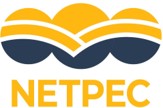NETPEC stands for “Negative Emission Technologies based on PhotoElectroChemical Methods” and is a collaborative research project funded by the BMBF. The overall goal of the NETPEC project is the development of highly efficient photoelectrochemical approaches to convert carbon dioxide into easily storable, safe and sustainable carbon sink products. This is accompanied by climate modeling, geological reservoir investigations and sustainability analysis, thus making the NETPEC project follow a holistic approach.
All of the contributing people and institutions are listed here and the tab “Project” contains more detailed information about the general project and also the different parts of the project.

(https://doi.org/10.1002/aenm.2021





